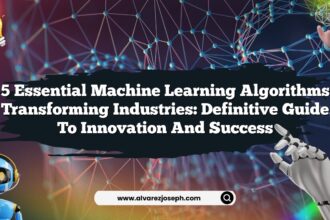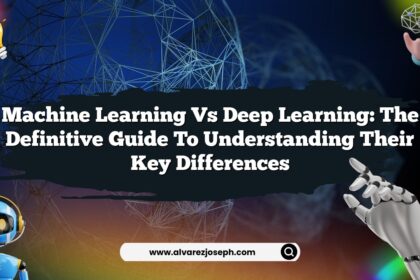Imagine strolling through a bustling market, where every stall promises wonders beyond your wildest dreams. Yet, amid the chaos, how do you decide where to start? That’s precisely how many feel when diving into the world of machine learning. The plethora of challenges can be overwhelming, but here’s the deal: mastering these hurdles isn’t just possible—it’s downright exhilarating once you get the hang of it. Ready to transform those machine learning struggles into seamless successes? Let’s embark on this journey together.
Unveiling the Hidden Obstacles in Machine Learning
Picture this: a detective, hot on the trail of a mystery, yet unable to see the forest for the trees. That’s often how practitioners feel when first tackling machine learning issues. Data quality, for instance, is the perennial nemesis that can make or break your project. Ever heard the saying, "Garbage in, garbage out?" It’s never been more relevant! Without clean, reliable data, even the most sophisticated algorithms will flounder. So, why not treat data cleansing as an art form—because, after all, it is.
But wait, there’s a subplot. Overfitting—the sly villain in our story. This occurs when your model knows your training data too well, like memorizing answers rather than understanding concepts. It might ace the test, but throw it a real-world problem, and it’s stumped. The antidote? Cross-validation and regularization techniques to ensure your model is worldly-wise.
Strategies to Conquer Data-Related Challenges
When life gives you lemons, you make lemonade, right? The same goes for data imbalances in machine learning. Instead of fretting over skewed data, embrace techniques like undersampling and oversampling. Moreover, innovative methods like SMOTE (Synthetic Minority Over-sampling Technique) can help conjure synthetic samples to balance the scales.
- Data Augmentation: Imagine giving your dataset a makeover, enhancing its diversity without altering its essence. This technique is particularly popular in image recognition tasks.
- Dimensionality Reduction: Ever felt bogged down by too much information? Techniques like PCA (Principal Component Analysis) come to the rescue, simplifying data without losing its core insights.
But this isn’t where the story ends. How can you ensure your model remains vigilant and adaptable in the face of ever-changing data landscapes?
Navigating Computational Complexities
Here’s the thing: machine learning isn’t a stroll in the park—it’s more like navigating a labyrinth with ever-shifting walls. Computational power is one of those walls that can stall progress. Enter cloud computing. With the likes of AWS, Google Cloud, and Azure, you can harness powerful computational resources without breaking the bank.
Now, let’s talk scalability. It’s one thing to create a model that works in the lab, but what about real-world scaling? Techniques like distributed computing and the use of big data frameworks like Hadoop and Spark can help bridge the gap.
"Scalability isn’t just a feature; it’s a necessity in today’s data-driven world." – Anonymous
But how does this relate to seamless model deployment? Read on.
The Art of Seamless Deployment
Imagine crafting the perfect dish but then fumbling when it’s time to serve it. That’s what deployment mishaps feel like. Deployment is all about ensuring your model moves from the lab to the real world without hiccups. Consider using containers and microservices to make this transition smoother than a well-oiled machine.
MLOps: The Unsung Hero
MLOps is to machine learning what DevOps is to software development. It brings the magic of automation and monitoring into your deployment process. Through continuous integration and delivery, MLOps ensures that your models are always up-to-date, adapting to new data seamlessly.
But this isn’t the climax. How do you ensure your efforts don’t go unnoticed?
Creating Impact with Your Machine Learning Models
Imagine unveiling a masterpiece only to find that no one appreciates it. To ensure this doesn’t happen to your models, focus on interpretability and explainability. It’s vital that stakeholders understand not just the ‘what’ but the ‘why’ behind your model’s decisions.
- Visualization Tools: Tools like SHAP and LIME can help demystify complex models, turning them into insightful stories that resonate with decision-makers.
- Effective Communication: Be the bridge between technical jargon and business strategy. Use layman’s terms to convey complex insights, ensuring your audience is always in the loop.
But how does this relate to ensuring continuous learning and improvement?
The Continuous Learning Loop
In the fast-paced world of machine learning, resting on your laurels is not an option. Continuous learning isn’t just beneficial; it’s essential. Model retraining and feedback loops ensure that your models evolve alongside emerging trends and data.
Now, imagine a world where your model adapts automatically—sounds dreamy, right? Automated machine learning (AutoML) is making this a reality, reducing the need for constant manual interventions and allowing machines to learn autonomously.
But this isn’t where the story concludes. What about the human element in this machine-driven world?
Infusing Humanity into Machine Learning
At the heart of every technological advancement is a human story. Machine learning should enhance, not replace, human capabilities. It’s about creating a symbiotic relationship where humans and machines collaborate, each enhancing the other’s strengths.
Imagine a world where AI biases are eliminated, and models are designed with ethical considerations in mind. This isn’t just a dream—it’s a necessity. By fostering diversity in data and ensuring ethical AI practices, we can create a future where technology serves all of humanity.
Quick Summary
- Data Quality: Clean and reliable data is fundamental for model success.
- Overfitting Solutions: Cross-validation and regularization can mitigate overfitting.
- Data Balancing: Techniques like SMOTE enhance data quality.
- Computational Resources: Cloud computing provides scalable solutions.
- Deployment: Use containers and microservices for smooth transitions.
- MLOps: Streamlines deployment with automated processes.
- Interpretability: Tools like SHAP make models comprehensible.
- Continuous Learning: AutoML reduces manual interventions.
- Ethical AI: Emphasizes ethical considerations and human collaboration.
- Impact: Ensures models are valuable and understandable to stakeholders.
Frequently Asked Questions
What is the biggest challenge in machine learning?
Data quality and biases often pose significant challenges, impacting model reliability and outcomes.
How can I prevent overfitting in my models?
Implement cross-validation, regularization techniques, and ensure your model generalizes well to new data.
Why is deployment a critical phase in machine learning?
Deployment is crucial as it ensures models function correctly in real-world environments, making them actionable and valuable.
What role does MLOps play in machine learning?
MLOps streamlines processes, from development to deployment, ensuring models are consistently updated and monitored.
How do I interpret complex machine learning models?
Use visualization tools like SHAP and LIME to break down model decisions into understandable insights.
Why is ethical AI important?
Ethical AI ensures fairness and inclusivity, eliminating biases and promoting technology that benefits everyone.
As you navigate the fascinating world of machine learning, remember: the journey is as rewarding as the destination. Embrace the challenges, leverage these strategies, and watch as your machine learning endeavors transcend expectations.












